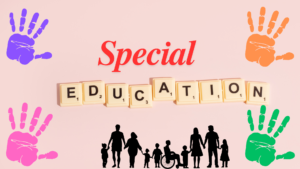
Education is a cornerstone of South Korean society, renowned for its rigorous academic system and emphasis on excellence. However, when it comes to special education, the narrative shifts to one of evolving progress, ongoing challenges, and a growing commitment to inclusivity. South Korea has made significant strides in providing educational opportunities for children with disabilities, but there is still room for improvement.
This article explores the state of special education in Korea, highlighting its current systems, notable advancements, challenges, and what the future might hold.
Overview of Special Education in Korea
South Korea’s special education law system aims to provide equal learning opportunities for students with disabilities, including those with physical, intellectual, emotional, and developmental challenges. The framework is guided by the Special Education Act (특수교육법), first enacted in 1977 and revised multiple times to reflect changing societal values.
Key Features of the System
- Free Education: Children with disabilities are entitled to free education from preschool to high school, with options for free vocational training for adults.
- Specialized Schools: Korea has more than 200 special education schools, catering to students with various disabilities.
- Integrated Education: Many students with mild to moderate disabilities attend mainstream schools with tailored support programs, promoting inclusivity.
Special Education Schools in Korea
Special education schools in Korea are designed to cater to specific disabilities, such as:
- Schools for the Visually Impaired: Focused on Braille literacy, mobility training, and vocational skills.
- Schools for the Hearing Impaired: Emphasize sign language education alongside standard academic subjects.
- Schools for Intellectual and Developmental Disabilities: Provide individualized education plans (IEPs) and life skills training.
Notable Schools
- National School for the Blind: Located in Seoul, this school offers comprehensive education and rehabilitation services.
- Miryang Special School: Renowned for its programs tailored to students with multiple disabilities.
Challenges in Special Education
Despite Korea’s advancements, challenges remain in achieving full inclusivity and equality for students with special needs.
Limited Resources
Many schools lack adequate teaching staff, resources, and facilities to address the diverse needs of students. Teachers often handle large class sizes, making it difficult to provide individualized attention.
Social Stigma
Cultural attitudes towards disabilities still carry stigma, which can discourage families from seeking specialized support. Efforts to normalize disabilities through public campaigns are ongoing but require sustained action.
Integration vs. Segregation
While integrated education is promoted, students with disabilities in mainstream schools may face bullying or isolation. Conversely, specialized schools can provide tailored support but risk segregating students from their peers.
Government Policies and Support
The South Korean government has implemented various policies to improve special education.
Individualized Education Plans (IEPs)
Every student with a disability is entitled to an IEP, ensuring tailored goals and support systems.
Special Education Support Centers
These centers, located across the country, provide diagnostic assessments, counseling, and assistive devices.
Financial Aid
Families of children with disabilities receive subsidies for education, transportation, and medical care.
Advancements in Technology and Special Education
Korea’s status as a global technology leader has significantly benefited special education.
- Assistive Devices: Tools like hearing aids, screen readers, and communication devices are becoming more accessible.
- EdTech Solutions: Programs like AI-driven learning apps and VR-based simulations are being developed to enhance engagement for students with disabilities.
- E-Learning Platforms: The COVID-19 pandemic accelerated the adoption of online learning, providing opportunities for students unable to attend physical schools.
Success Stories and Inspirational Programs
Inclusive Art Programs
Initiatives like the “Barrier-Free Film Festival” showcase works created by individuals with disabilities, promoting awareness and inclusion.
Vocational Training Success
Programs focusing on employable skills, such as computer literacy and crafts, have helped students transition to independent living.
Paralympic Participation
South Korea’s Paralympic athletes have inspired pride and visibility for individuals with disabilities.
Future Directions for Special Education in Korea
To build a truly inclusive education system, Korea needs to address key areas.
Teacher Training
Increased investment in specialized training programs for educators to handle diverse learning needs effectively.
Parental Support
Expanding counseling and workshops to empower families of children with disabilities.
Awareness Campaigns
Continued efforts to reduce stigma and promote acceptance of disabilities in society.
Policy Improvements
Ensuring that all schools meet accessibility standards and providing incentives for inclusive practices.
How Families Can Access Support
Families seeking special education services in Korea can start by contacting their local Special Education Support Center (특수교육지원센터). These centers provide:
- Free diagnostic evaluations.
- Placement guidance for specialized or mainstream schools.
- Access to assistive technology and financial aid programs.
Conclusion
Special education in Korea has come a long way, reflecting a growing commitment to ensuring that every child has the opportunity to thrive. While challenges persist, the combination of government policies, technological advancements, and social efforts is paving the way for a more inclusive society.
By fostering awareness, improving resources, and celebrating the potential of all learners, Korea can continue to build a future where every student, regardless of ability, has the chance to succeed.